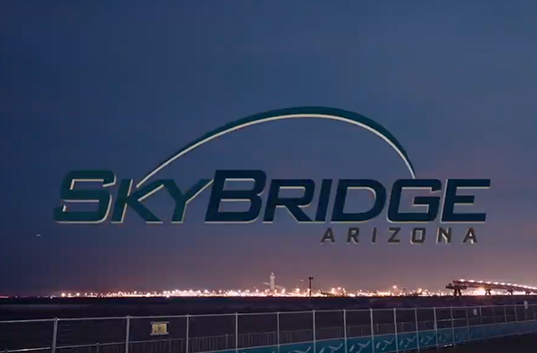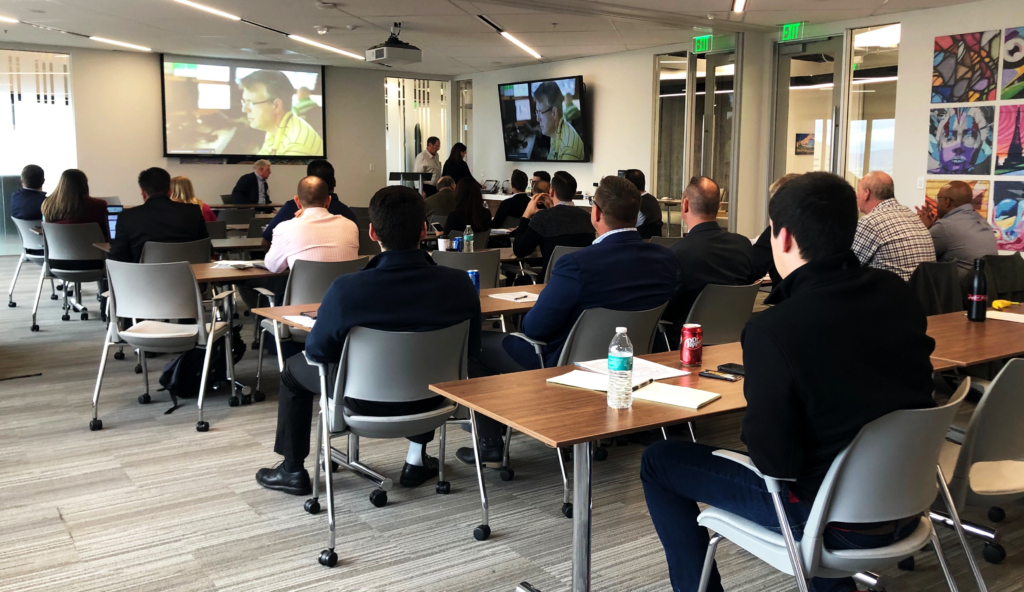

Special event recap: SkyBridge Arizona presentation
Published: 02/22/2019
Updated: 03/14/2019
Read the article in Spanish here.
How the development of the nation’s first international air cargo hub could benefit the supply chain industry
“We are trying to find new ways to improve how air cargo freight comes into our system,” says Steve Schellenberg, the vice president of business development of IMS Worldwide Inc., about the development of SkyBridge Arizona. “We are building that possibility today, in your backyard.”
Schellenberg and David Peterson, of SkyBridge development, presented at the Greater Phoenix Economic Council (GPEC) to supply chain and freight transport industry professionals about the future of SkyBridge Arizona. The presentation took place at the Council of Supply Chain Management Professionals’ 13th Annual Supply Chain Symposium, which brought together experts to discuss trends and innovations in the supply chain management industry.
What is SkyBridge Arizona?
In January 2018, Arizona Governor Doug Ducey announced that SkyBridge Arizona, set to operate out of Phoenix-Mesa Gateway Airport, will be the nation’s first international air cargo hub to house Mexican and United States customs. SkyBridge Arizona was created to limit the extensive freight time it takes to deliver goods to the growing consumer market in Mexico and beyond from weeks to days.
The project, which will also ensure that proper inspections and safety measures are taken, was formed from past agreements signed with United States Customs and Border Protection, Mexico’s Administracion General de Aduanas, and Phoenix-Mesa Gateway Airport.
“When the flight leaves SkyBridge Mesa, it can land anywhere in Mexico without anticipating any more inspections,” says Peterson. “The cargo can land and immediately be unloaded, unlike other international flights that are required to go through ports and inspections in Mexico.”
Schellenberg added that with a competitive time advantage over major airports in Chicago and Los Angeles, “Freight from SkyBridge can be in and out of Mesa in three or four hours, including loading and unloading times.”
What will be the impact of SkyBridge Arizona?
“There is a lot of advantages besides that overall time of shipping, it’s also what you can do in between to take advantage of all possible markets,” says Peterson on the subject of agriculture and other products that are shipped from the U.S. “Avocado growers can leave their avocados on the trees a lot longer, pick them, then get the produce on the plane so it can arrive and be cleared in the destination, all on the same day.”
In order to reach this level of efficiency, SkyBridge will have over 4 million square feet of warehouse hanger space, an additional 2,500 feet long runway, and various taxi lanes. The project is set to create 17,000 jobs and increase cargo flights out of Phoenix-Mesa Gateway Airport from 2,000 a year to 10,000 by 2036.
With a 15-year build out plan, the project will also provide infrastructure improvements around Phoenix-Mesa Gateway Airport that include water, sewer and power expansions.
“SkyBridge Arizona will become a game changer that significantly increases, not only real estate development, but logistics jobs and the density of freight flow in this market,” says Schellenberg.
